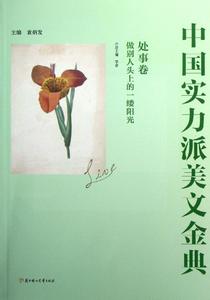马匹紧闭着嘴通过鼻子呼气,但不会发出像喷鼻息那样的振动或扑动样的噪音。小编精心收集了关于马的英语美文,供大家欣赏学习!
关于马的英语美文篇1
The horse is a hooved (ungulate) mammal, a subspecies of the family Equidae. The horse has evolved over the past 45 to 55 million years from a small multi-toed creature into the large, single-toed animal of today. Humans began to domesticate horses around 4000 BC, and their domestication is believed to have been widespread by 3000 BC. Although most horses today are domesticated, there are still endangered populations of the Przewalski's Horse, the only remaining true wild horse, as well as more common populations of feral horses which live in the wild but are descended from domesticated ancestors. There is an extensive, specialized vocabulary used to describe equine-related concepts, covering everything from anatomy to life stages, size, colors, markings, breeds, locomotion, and behaviour.

Horses' anatomy enables them to make use of speed to escape predators and they have a well-developed sense of balance and a strong fight-or-flight instinct. Related to this need to flee from predators in the wild is an unusual trait: horses are able to sleep both standing up and lying down. Female horses, called mares, carry their young for approximately 11 months, and a young horse, called a foal, can stand and run shortly following birth. Most domesticated horses begin training under saddle or in harness between the ages of two and four. They reach full adult development by age five, and have an average lifespan of between 25 and 30 years.
Horse breeds are loosely divided into three categories based on general temperament: spirited "hot bloods" with speed and endurance; "cold bloods", such as draft horses and some ponies, suitable for slow, heavy work; and "warmbloods", developed from crosses between hot bloods and cold bloods, often focusing on creating breeds for specific riding purposes, particularly in Europe. There are over 300 breeds of horses in the world today, developed for many different uses.
Horses and humans interact in a wide variety of sport competitions and non-competitive recreational pursuits, as well as in working activities such as police work, agriculture, entertainment, and therapy. Horses were historically used in warfare, from which a wide variety of riding and driving techniques developed, using many different styles of equipment and methods of control. Many products are derived from horses, including meat, milk, hide, hair, bone, and pharmaceuticals extracted from the urine of pregnant mares. Humans provide domesticated horses with food, water and shelter, as well as attention from specialists such as veterinarians and farriers.
关于马的英语美文篇2
Unlike ancient artists obsessed with saddled horses, Xu Beihong preferred feral and wild ones. Trained in France, the Chinese master studied equine anatomy, spending hours observing horses’ movements and expressions. Xu’s portrayals of horses galloping or trotting past, in a rich variety of poses, are some of the most captivating of their kind. Using mostly black ink, they combine the best methods from East and West. The lines and brush strokes are simple, yet invariable evoke the essence of the animals.
古代的艺术家热衷于画被驯服的马,画家徐悲鸿却对画野马情有独钟。这位国画大师在法国进修期间学习了马的解剖,他花费大量的时间观察马的动态和表情。徐悲鸿画的马,有的飞奔,有的小跑,形态各异,非常有魅力。他画的马多是黑色,结合了中西方绘画手法,线条和笔画简单,但是每幅画所画的动物却都十分传神。
 爱华网
爱华网



